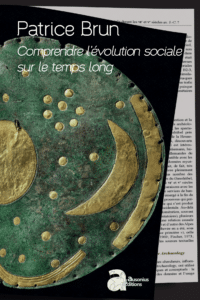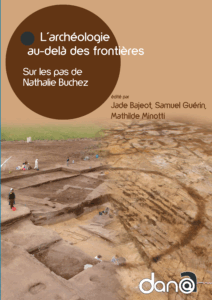UN@ est une plateforme d'édition de livres numériques pour les presses universitaires de Nouvelle-Aquitaine
Catégorie : Archéologie
par Patrice Brun
Pendant l’âge du Bronze, d’évidentes affinités typologiques lient les îles britanniques et les régions occidentales de la péninsule Ibérique, de la France et du Benelux. Cette constatation a très logiquement généré l’idée d’une communauté culturelle atlantique
par Émilie Louesdon
Les enjeux d’une approche technologique en céramologie s’inscrivent dans une démarche engagée il y a maintenant une cinquantaine d’années et ont fait l’objet de nombreux travaux sur le territoire national comme au-delà de nos frontières.
par Mathilde Minotti
No human being appears entirely naked when on public display. In the absence of clothing, tattoos, and make-up, ornaments and other embellishments modify bodies and physiognomies in all human cultures.
Découvert en 1987 lors de prospections de l’université d’Amsterdam, le tell se trouve à 40 km au nord-est de la ville de Zagazig, dans la province de la Sharqiyah.
En définitive, Nathalie nous aura permis de voyager dans les Hauts-de-France et ses marges, ainsi que dans des contrées plus chaudes et ensoleillées : du Soudan à l’Égypte, et ce au gré de thématiques scientifiques qui l’auront guidée durant toute sa carrière d’archéologue/égyptologue et de céramologue.
En l’absence d’une écriture développée, malgré quelques balbutiements hiéroglyphiques dont la nature fait encore débat, aucune archive, compte-rendu officiel ou autre document textuel …
In early Egyptian cemeteries, there is a small group of graves that somehow escapes our full understanding.
par Vera Müller
It was in the first 2,5 months of 1910, when Hermann Junker excavated the cemetery at Turah of the late Predynastic and Early Dynastic Period and published it two years later.
Le site prédynastique d’Adaïma (fig. 1) se trouve en Haute-Égypte, sur la rive ouest du Nil, à environ 8 km au sud de la ville moderne d’Esna et à 20 km au nord de l’ancienne Hiérakonpolis.
par Federica Ugliano
The village of Hemamieh is located on the eastern bank of the Nile about 50 km south of Asyut, in the so-called “Badari region”.
The analysis of the ceramic materials recovered in the predynastic settlement and necropolis WK15 and WK14 at Nag el-Qarmila (Aswan, Egypt, fig. 1) was recently resumed in the frame of the TECHNOPREGYPT Project…



